Rajasthan farmers are the world’s second-largest producers of cumin seed. But they are locked out and unable to sell their harvested produce
After facing crop losses due to locust attack and unseasonal rains, jeera farmers in Rajasthan complain they are unable to transport their harvested produce to Unjha mandi in Gujarat. State officials claim no such restrictions. Come monsoon rains and the cumin seed produce may go waste

It’s been almost a month now. Lala Saran, a farmer from Gudahema village in Jalore district of Rajasthan, daily spends hours helplessly looking at the 180 gunny bags of jeera (cumin seed), his rabi (winter) crop produce, stacked up in his house.
If it was not for the nationwide lockdown due to coronavirus pandemic, Saran would have hired a tempo and travelled 160-km to Unjha APMC (agricultural produce market committee) in the Mehsana district of north Gujarat, a famous mandi for spices and their export, and sold it all. One sack of cumin seed, weighing about 65 kg, would have fetched him over Rs 10,000-Rs 12,000. Thus, at least an earning of Rs 18 lakh for the rabi produce of 117 quintals cumin seed.
However, at present, Saran is staring at a complete loss. “I harvested my jeera crop about a month back and packed it in 180 boris (gunny bags). But, because of the lockdown, I am unable to transport my produce to Unjha mandi where I sell my crop every year,” he told Gaon Connection.
“Rajasthan does not have proper mandis for jeeraand the price offered is also much less. Hence, farmers prefer travelling and selling their produce in Unjha, Gujarat, a major trading centre,” he added.
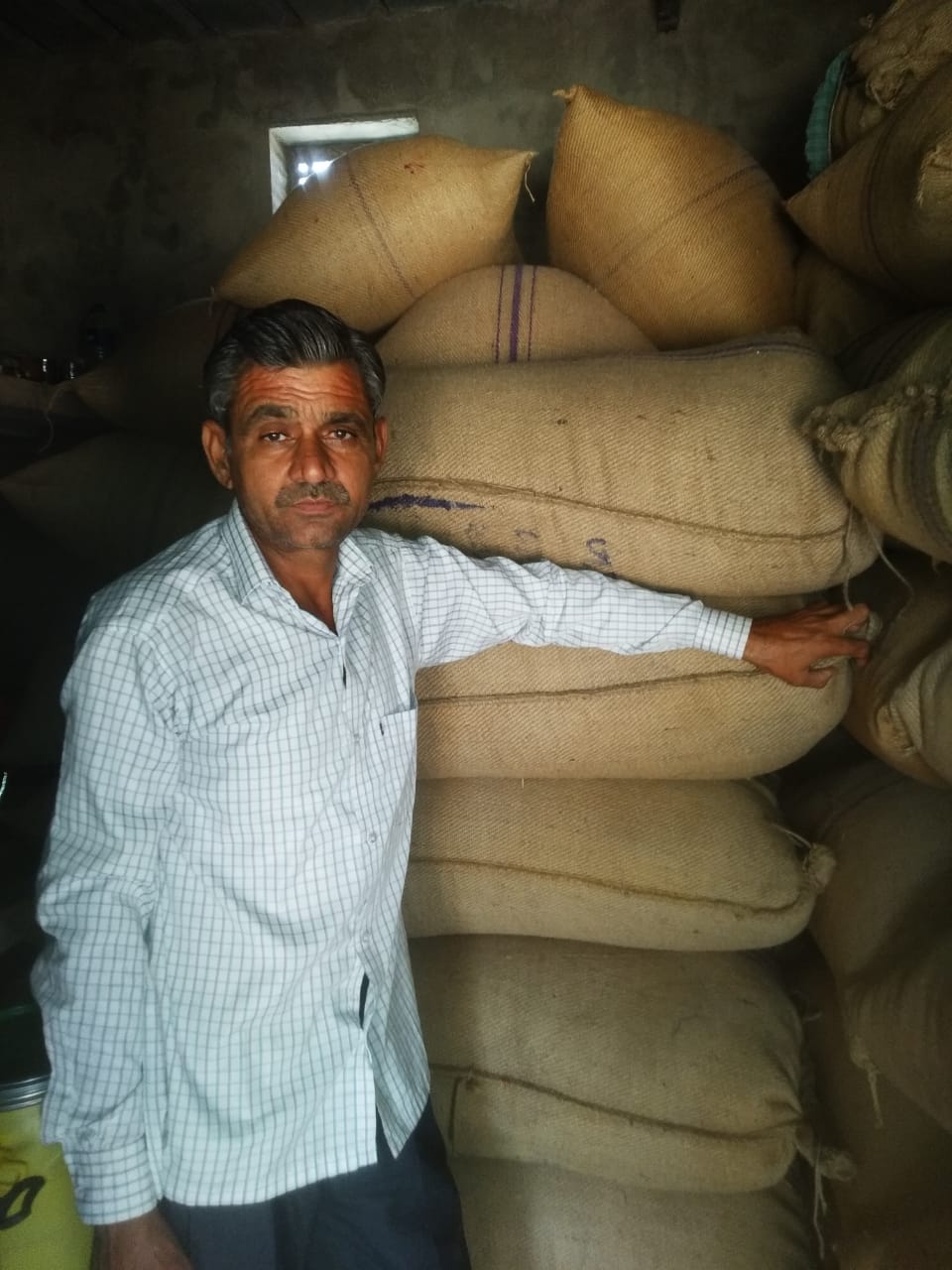
Saran is not the only hapless jeerafarmer in Rajasthan waiting to sell his harvested produce before it rots at his home.
Gangaram Bishnoi, another jeera farmer from Manohar village in Jalor district, has 45 quintals of cumin seed from his six hectares (ha) land, packed and waiting to be sold for the last two weeks. “Mandis are shut and borders are sealed. How do we carry our produce to Unjha? We request the government to buy our jeera else we farmers will be wiped off,” Bishnoi told Gaon Connection. He claimed he has Rs 2 lakh debt, a loan he had taken from the bank for this year’s rabi crop.

“First our crop was destroyed by one of the worst locust attacks. This was followed by unseasonal rains. And, now the lockdown has added to our woes,” he added.
However, the government officials claim there are no such restrictions on the farmers and their produce. “The government has no direct role in the purchase of jeera, as there is no MSP [minimum support price] for cumin seed,” Himanshu Gupta, district collector of Jalore told Gaon Connection. “Initially there were some problems, but now farmers are free to transport their produce inter-state or within the state. Jeera is also a part of the essential goods,” he added.
According to him, some APMC mandis in the state have already started procuring other rabi crops from the farmers. “In Jalore, we will start buying mustard and chana from the farmers on MSP from May 1,” he informed.

In response to the coronavirus (COVID-19) pandemic, on March 24, Prime Minister Narendra Modi declared a nationwide lockdown, which was expected to get over on April 14, but has been extended till May 3.
This is the time of the year when farmers harvest their rabi crops and throng the agriculture mandis to sell their produce. Because of the lockdown, they have been unable to sell their produce as a large number of mandis are still not fully operational.
On April 15, the Union Ministry of Home Affairs issued consolidated revised guidelines for the containment of COVID-19 in the country. Under these guidelines, certain activities have been exempted. This includes agricultural and horticultural activities such as “mandis operated by the Agriculture Produce Market Committee (APMC) or as noticed by the State/UT Government (satellite mandis). Direct marketing operation by the State/UT Government or by industry, directly from farmers/group of farmers, FPO’s co-operatives, etc. States/UTs may promote decentralised marketing and procurement at the village level.”
However, farmers complain they are still unable to sell their produce.
“In the first set of lockdown guidelines issued by the Union Home Ministry on March 24, there was neither any mention of agriculture nor farmer,” Ramandeep Singh Mann, an agriculture activist working closely with farmers in Punjab and Haryana told Gaon Connection. “Three days later, the second addendum by the ministry referred to the exemption of mandis and farming operations. And now the revised guidelines of April 15 talk the same. But where is the implementation of these orders? Farmers are unable to transport and sell their produce,” he added.
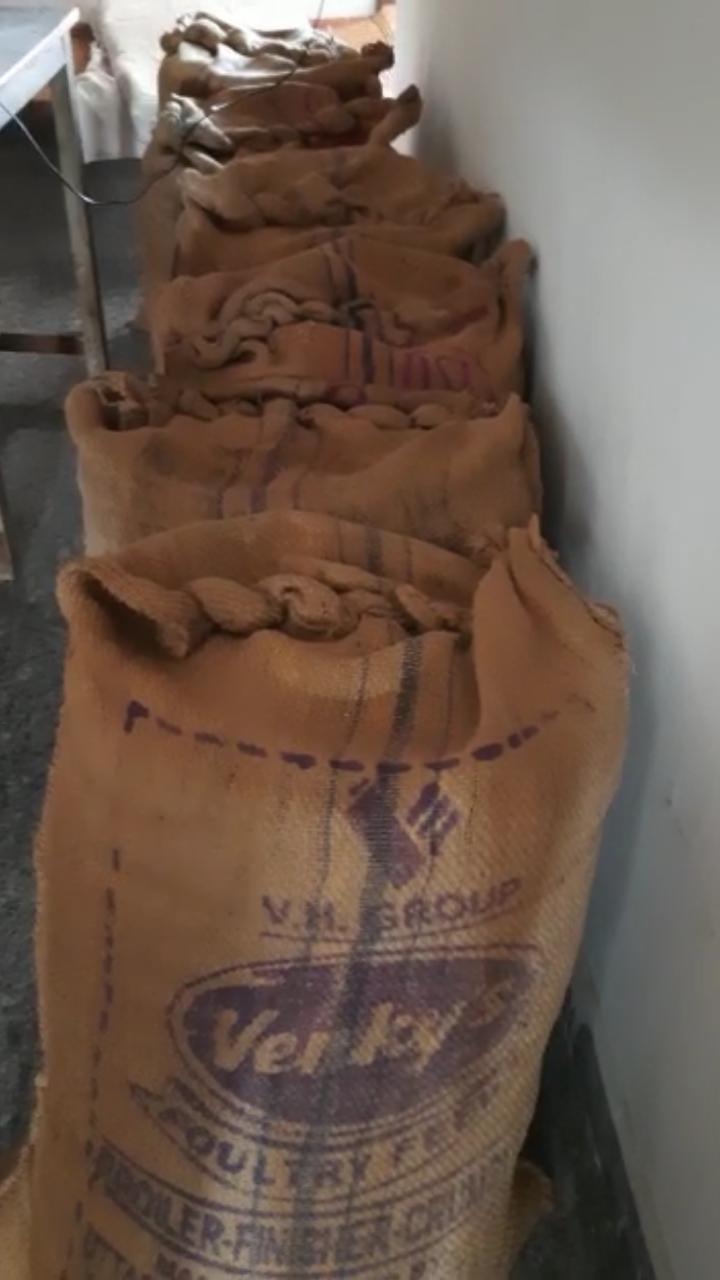
India is the world’s largest producer and consumer of cumin seed. It is estimated India accounts for 70 per cent of the global cumin seed production.
Within the country, Gujarat and Rajasthan are the two top cumin seed-producing states with 90 per cent national production share (see table: Annual production of cumin seed in Gujarat and Rajasthan).
Table: Annual production of cumin seed in Gujarat and Rajasthan
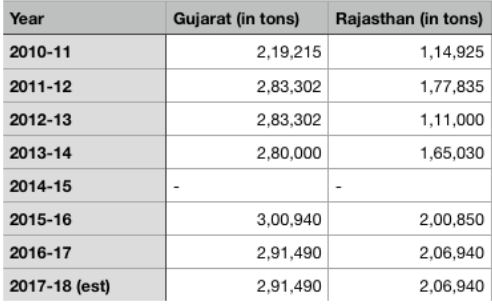
As per the Spices Board of India, under the Union Ministry of Commerce & Industry, in 2017-18, Gujarat had 278,750 hectares (ha) area under cumin seed with an annual production of 291,490 tons. Rajasthan, with 500,140 ha area under cumin seed crop, produced 206,940 tons. The country’s total annual production of cumin seed that year was 500,380 tons.
Last year, in 2018-19, the country exported 180,300 tons of cumin seed worth Rs 288,480 lakh, as recorded by the Spices Board of India. This is more than what India exported in 2017-18 and 2016-17 — Rs 241,798 lakh and Rs 196,320 lakh, respectively (see graph: Annual export of cumin from India (in tons)).
Graph: Annual export of cumin from India (in tons)
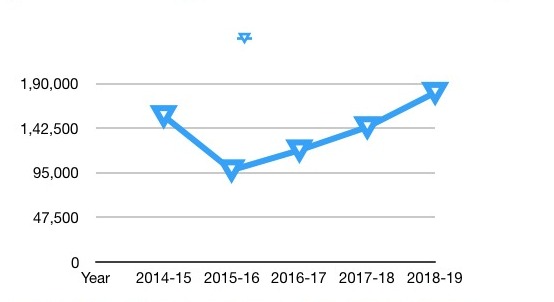
Source: https://www.indianspices.com/sites/default/files/Major%20Item%20wise%20Export%202019.pdf
However, in the wake of COVID-19, cumin seed exports may also be affected. By early February this year, there were news reports of a fall in jeera prices because of the coronavirus outbreak in China, which is one of the largest buyers of cumin seed from India.
Now with India in the midst of a pandemic, jeera farmers of Rajasthan allege they have no buyers.
“Jeera is a four-and-a-half-month crop and takes the entire winter season. We have to invest so much, right from buying seeds, ploughing the field thrice with a tractor, i rrigation cost and other inputs like urea, DAP [di-ammonium phosphate, a fertiliser], etc,” said Saran. “I had hired a tractor and paid Rs 100 per hour rent. For harvesting, labour cost per person is Rs 300 a day. After all this investment, now there are no takers for my crop worth Rs 18 lakh,” he added. Like Bishnoi, he too has a loan of Rs 2 lakh.
Coronavirus is not the only disaster farmers of Rajasthan are dealing with. In the last few months, these farmers have faced one of the worst locust attacks that wiped off standing crops in several villages of Western Rajasthan.
“My farmland was also affected by the locust attack. I was expecting jeera production worth 100 quintals. But, because of the attack, I lost a large chunk of my crop and got only 45 quintals,” said Bishnoi. “Now, under the lockdown, no one is ready to buy even that,” he lamented.
And time is running out fast. “We have packed jeera in gunny bags. But, if the air gets moist or the rains arrive, then jeera will soak the moisture and our entire produce will go waste. The government must help us sell jeera in the next one month,” said Saran.
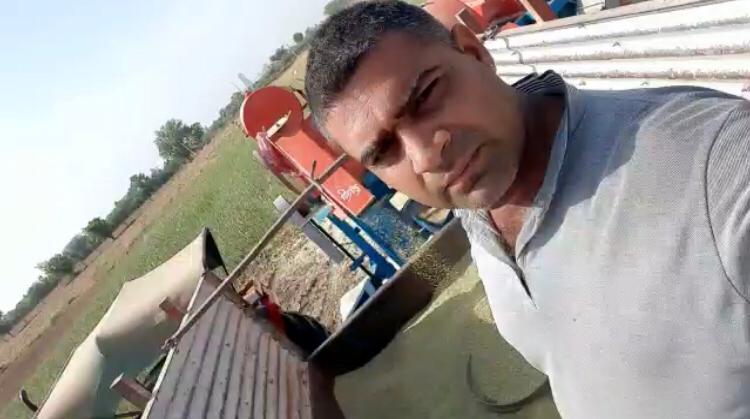
Pradeep Khoja is a cumin seed and fennel seed farmer based in Pali, Rajasthan. On his 8 ha land, he had grown cumin seed and got a production of 200 gunny bags (one bag of 65 quintal jeera, so total 130 quintals jeera). The nearest agriculture mandi for him to sell cumin seed is Bilara in Jodhpur district where he was expecting to earn Rs 15,000 per quintal of jeera.
“Because of the lockdown, the Bilara mandi was shut for almost a month. On April 17-18, it was opened, but because of over-crowding and restrictions of social distancing, it was against shut down,” Khoja told Gaon Connection. “We do not know when we will be able to sell our harvested produce,” he added.
Unlike Saran and Bishnoi, who travel to Unjha in north Gujarat to sell jeera, Khoja sells it locally. “Unjha mandi is definitely much larger with international connections and better price, but for farmers in Pali, it is almost 300-km away, so the transportation cost is very high. Bilara mandi is over 25-km away, so we go there,” he said.
Apart from cumin seed, Khoja had cultivated rabi crop of fennel seed, and wheat on 6 ha land each. “I already have 200 gunny bags of jeera lying at my home. Where do I store the wheat and fennel seed?” he wondered.
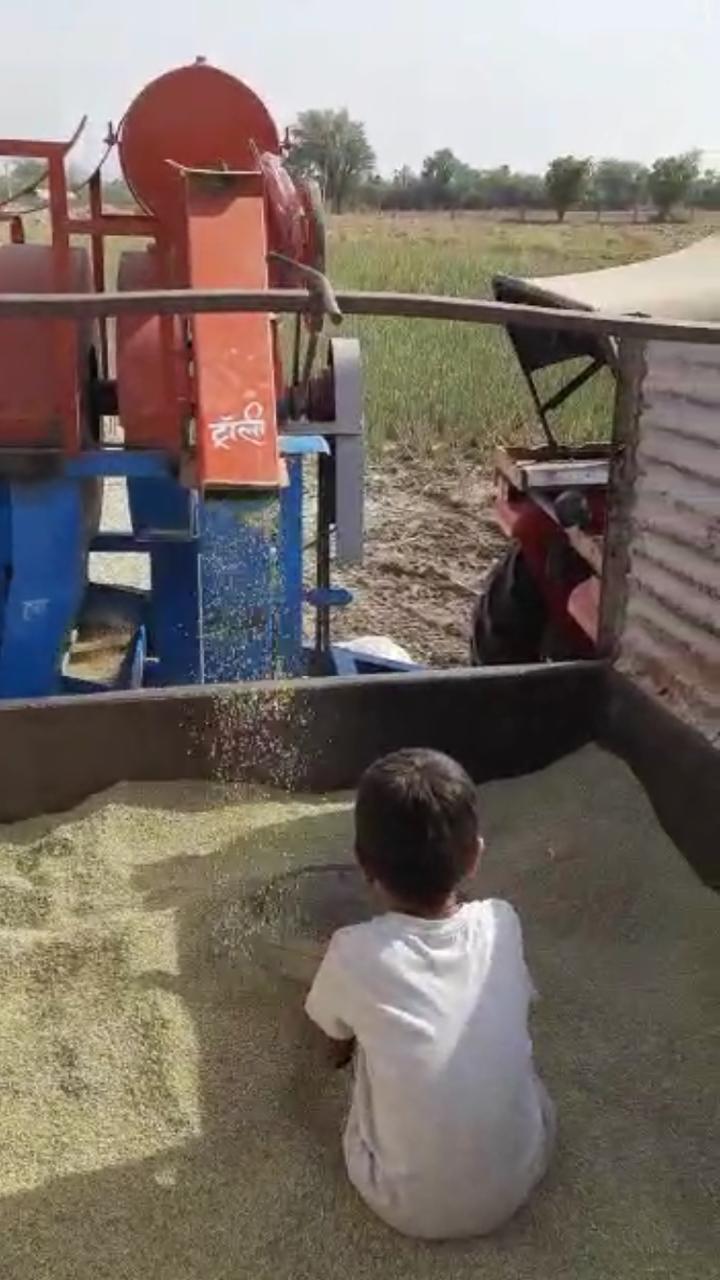
Bishnoi and his four brothers (all farmers) are in a similar catch-22 situation. Apart from cumin seed on 6 ha land, they had sown wheat on 3 ha, arandi (castor oil seed) on 4 ha, and isabgol (psyllium) on 6 ha area.
“I have 45 quintals of jeera, 70 quintals wheat, 55 quintals arandi and 50 quintals isabgol lying with me. There are no buyers. Where do I go?” asked Bishnoi.
A rough back-of-the-envelope calculation shows the high losses they are staring at. At Rs 15,000 a quintal, 45 quintals of jeera would have fetched them Rs 6.75 lakh. At Rs 12,000 a quintal for isabgol, they were expecting to earn Rs 6 lakh. Further, earning from arandi (Rs 6,000 a quintal) and wheat (Rs 2,200 a quintal) meant an additional income of Rs 3.3 lakh and Rs 1.54 lakh, respectively.
Based on the April 15 revised guidelines of the Union Home Ministry, the Rajasthan government also issued an order updating activities exempted under the lockdown, including agriculture commodity shops and mandis.
“The orders have been issued, but the implementation is weak on the ground. Farmers are still unable to sell their rabi crops. The government must come to their rescue, as they have already suffered enough losses due to locust attack and unseasonal rains,” Shaitan Singh Vishnoi of DS Dhani village in Chitalwana block of Jalore told Gaon Connection.
Apart from being a health crisis, COVID-19 is fast snowballing into a livelihood, farming and humanitarian crisis. The state machinery must ensure the farmers are able to sell all their produce at a reasonable price so that they have sufficient money to undertake kharif (summer monsoon) farming. The southwest monsoon, forecasted to be normal this year, is just over a month away.

